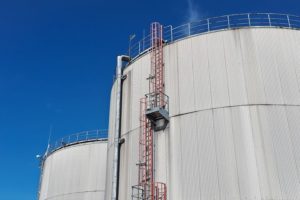Types of Generator Fuel Tanks: Sub Base, Underground, and Above Ground

Sub Base, underground, above ground – which type of fuel tank is best? There’s really no easy answer. No “one size fits all” solution. Each has their fair share of pros and cons. The question really should be, “Which tank type suits your needs best?” So with that in mind, we’ll take a look at the features, pros, and cons of generator sub base tanks, underground tanks, and above ground tanks.
Generator Sub Base Tanks
First, sub base tanks sit above ground but beneath the base of the generator set. They’re rectangular and double-walled, which helps prevent spillage. Several piping and fittings attach to the tank, such as:
- Fuel supply and return
- Air vent
- Emergency pressure relief valve
- High and low level fuel alarms
They design the tank fill system such that there no spillage occurs during filling, and the inlet valve automatically closes when the tank is 95% full. However, generator sub base tanks tend to be smaller than their counterparts. If you need to store less than 1,000 gallons of fuel, a sub base tank stands as your best option.
Underground Tanks
Second, underground tanks come with a greater cost, but they last the longest since they’re shielded from the environment. Constructed from fiberglass-reinforced plastic or cathodically protected steel, they require overfill and spill prevention equipment since spillage underground can bring great challenges. Contrast this with generator sub base tanks. Finally, the underground area in which the tank stores comes surrounded by concrete floor and walls. After the underground storage tanks are installed within this area, the external region comes packed with sand and gravel.
Above Ground Tanks
Third, above ground tanks find similar construction to underground tanks, but the installation procedures remain quite different. Above ground storage tanks pose a fire hazard with the risk of fire spreading to other facilities in the vicinity. Thus, these tanks must stay at a minimum specified distance from other facilities. In order to contain spills and leakages, dikes have to be built around above ground storage tanks. The free volume enclosed by the dikes should generally be 110% of the volume of the tanks. Above ground storage tanks also need protection from weather conditions with suitable protective structures.
Learn More About Generator Sub Base, Underground, and Above Ground Tanks
Lastly, as you can see, deciding which tank type is best is no easy task. For greater fuel quantity, underground or above ground probably stands as the best choice. However, generator sub base tanks also provide unique benefits. If you’d like to know more, or need help deciding, please contact us at Woodstock Power.

